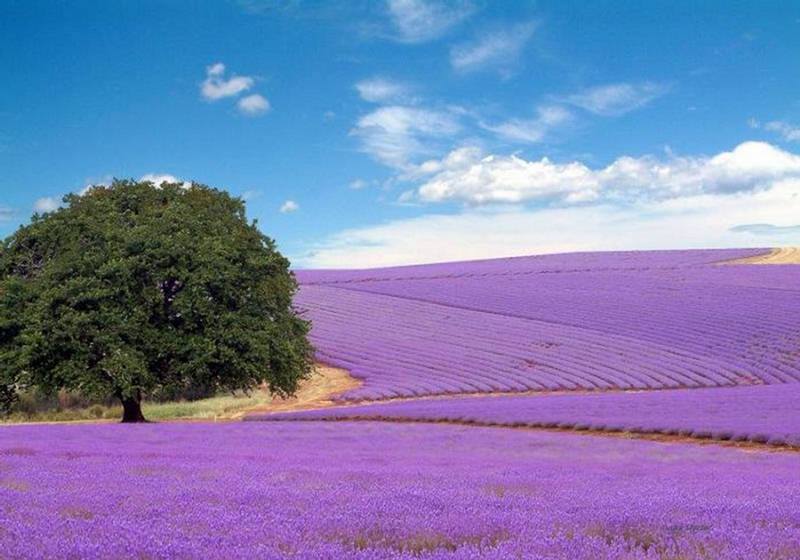Lavender is the common name for lavendula, a flowering plant consisting of 39 species. Originating in Southern Europe, the Mediterranean, South West Asia, South East Asia, Northern and Eastern Africa, as well as Cape Verde and the Canary Islands, the plant grows particularly well in hot climates. It is grown as both an ornamental plant and commercially, for the extraction of essential oil.
To produce lavender essential oil, the lavender plants are first placed in a distillation tank. As the tank is loaded, the steam travels through the plants and drains out the essential oils. The steam is then cooled in the condenser whereby the mix becomes a liquid. The mix of essential oil and water is separated in a florentine vase; the oil floats to the surface and is collected.
During the summer months, you can expect to see several fields of lavender in the south of France. This country is a leading producer of Lavender, as they’re responsible for supplying 30% of the entire industry. Unfortunately, according to the article, there has been a decline in the supply because of environmental and climatic concerns. But despite that, the demand from consumers continues to remain high. And because of that, the industry is looking for ways to consistently meet the high demand.
France’s Lavender producers continue to encourage local farmers to maximize efforts in growing Lavenders and provide enough supplies. They continue to strategize how to increase supply, which is enough reason why they continue to be the leader in the Lavender industry. Aside from France, many local farmers worldwide have considered growing Lavender for profits because of its persistent demand.
The plant is a favorite among consumers, so as long as farmers and suppliers effectively handle its production, the industry could continue to boom, making it a vital resource in the market except that the chemical industry is longing to take over the market. You cannot patent nature but they can create the scent of lavender with a composition of a few molecules created synthetically in a laboratory. And these creations can be patented and put on the market.
Their lobby convinced the EU lavender contains linalool an allergen. This is a huge problem for lavender growers in the EU while making the use of lavender impossible for aromatherapists and natural perfumers.
Considering isolated molecules is a lack of knowledge when we talk about botanicals. A flower or a plant should be considered as a whole as molecules are interacting between themselves and the EU commission recognised they've never tested any botanicals.
During a meeting between the EU Commission, the International Perfume Foundation and Cropwatch in 2007, IPF underlined that ‘laboratory bench’ investigations of the alleged toxicity of an isolated single component within a complex biological matrix may be completely misleading. We need protocols that investigate the toxicity of the actual complex ingredients themselves rather than isolated versions of the individual constituents of the ingredients, versions which are often impure (with unspecified impurities), or composed of the wrong isomer(s) compared with the whole plant composition where all molecules interact with each other.
The European Commission said "they want to protect consumer’s health".


 RSS Feed
RSS Feed